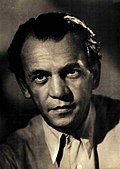December 1946 Hessian state election
| |||||||||||||||||||||||||||||||||||||||||||||||||||||||||||||||||
All 90 seats in the Landtag of Hesse 46 seats needed for a majority | |||||||||||||||||||||||||||||||||||||||||||||||||||||||||||||||||
|---|---|---|---|---|---|---|---|---|---|---|---|---|---|---|---|---|---|---|---|---|---|---|---|---|---|---|---|---|---|---|---|---|---|---|---|---|---|---|---|---|---|---|---|---|---|---|---|---|---|---|---|---|---|---|---|---|---|---|---|---|---|---|---|---|---|
| Turnout | 1,741,416 (73.2% | ||||||||||||||||||||||||||||||||||||||||||||||||||||||||||||||||
| |||||||||||||||||||||||||||||||||||||||||||||||||||||||||||||||||
 Results of the election. | |||||||||||||||||||||||||||||||||||||||||||||||||||||||||||||||||
| |||||||||||||||||||||||||||||||||||||||||||||||||||||||||||||||||
The December 1946 Hessian state election was held on 1 December 1946 to elect the 1st Landtag of Hesse. The outgoing government was an all-party coalition led by Minister-President Karl Geiler.
Compared to the elections for the Constituent Assembly held at the end of June, both the Social Democratic Party (SPD) and Christian Democratic Union (CDU) declined, while the Liberal Democratic Party (LDP) particularly improved. The SPD remained the largest party with 43%, followed by the CDU on 31%, LDP on 16%, and Communist Party (KPD) on 11%. The SPD subsequently formed a grand coalition with the CDU, led by Minister-President Christian Stock.
Electoral system
[edit]The Landtag was elected via party-list proportional representation. 62 members were elected in multi-member constituencies, and 28 then allocated using compensatory proportional representation. A single ballot was used for both. An electoral threshold of 5% of valid votes is applied to the Landtag; parties that fall below this threshold are ineligible to receive seats.
Background
[edit]In the previous election held on 30 June 1946, the SPD emerged as the largest party with 44.3%, followed by the CDU on 37%, KPD on 10%, and LDP on 8%.
Parties
[edit]The table below lists parties represented in the Constituent Assembly.
| Name | Ideology | Lead candidate |
June 1946 result | |||
|---|---|---|---|---|---|---|
| Votes (%) | Seats | |||||
| SPD | Social Democratic Party of Germany Sozialdemokratische Partei Deutschlands |
Social democracy | Christian Stock | 44.3% | 44 / 90
| |
| CDU | Christian Democratic Union of Germany Christlich Demokratische Union Deutschlands |
Christian democracy | Werner Hilpert | 37.3% | 35 / 90
| |
| KPD | Communist Party of Germany Kommunistische Partei Deutschlands |
Communism | Oskar Müller | 9.8% | 9 / 90
| |
| LDP | Liberal Democratic Party Liberal Demokratische Partei |
Classical liberalism | August-Martin Euler | 8.1% | 6 / 90
| |
Results
[edit]| Party | Votes | % | +/– | Seats | |||||
|---|---|---|---|---|---|---|---|---|---|
| Con. | List | Total | +– | ||||||
| Social Democratic Party | 687,431 | 42.71 | –1.54 | 30 | 8 | 38 | –4 | ||
| Christian Democratic Union | 498,158 | 30.95 | –6.31 | 21 | 7 | 28 | –7 | ||
| Free Democratic Party | 252,207 | 15.67 | +7.58 | 8 | 6 | 14 | +8 | ||
| Communist Party | 171,592 | 10.66 | +0.87 | 3 | 7 | 10 | +3 | ||
| Total | 1,609,388 | 100.00 | – | 62 | 28 | 90 | 0 | ||
| Valid votes | 1,609,388 | 92.42 | |||||||
| Invalid/blank votes | 132,028 | 7.58 | |||||||
| Total votes | 1,741,416 | 100.00 | |||||||
| Registered voters/turnout | 2,380,109 | 73.17 | |||||||
External links
[edit]- "Elections to the Hessian Landtag, 1946 - 1954" (PDF). Parliamentary Data Bank of the Hessian Landtag (in German). 1978. Retrieved 17 September 2023.
- "Elections to the Hessian state parliament, December 1, 1946". Hessian Regional History Information System (in German). Retrieved 17 September 2023.



